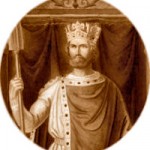“Anyone who gives you a cup of water to drink…”

Today’s reading from the Gospel of Mark (Twenty-sixth Sunday of Ordinary Time, Cycle B) is one of the more challenging ones. Jesus’ disciples have been struggling to figure out what it really means to be great in the Kingdom, to be a follower of Jesus, and what kind of exclusivity pertains to their role as His followers. John tells Jesus that someone who is not one of their group is driving out demons in Jesus’ name. Jesus’ followers are trying to get the man to stop doing it – he’s not authorized to use the power – almost as if it were under trademark protection or something. Jesus assures them that anyone not actively against them is for them, so it’s OK for the other person to cast out demons using Jesus’ name (a term also meaning power and authority). He continues, “Anyone who gives you a cup of water to drink because you belong to Christ, amen, I say to you, will surely not lose his reward.” (Mk 9:41)
The reading goes on to include Jesus’ teachings about removing things from our lives that get in the way of a free, loving response to God’s presence and call in our lives. It’s very dramatic in its images – plucking out an eye, or cutting off a hand or foot! But sometimes those physical actions might actually be easier than the spiritual work that is really required. Forgiving someone who has hurt us deeply, trusting again, giving freely of our time, talents and treasure when those gifts were not accepted graciously the last time we offered them, moving forward in faith when danger is all around and there seems no way that good can prevail… All in all, a couple of challenging passages.
Yet this year, the twenty-sixth Sunday of Ordinary Time coincides with the feast of St. Vincent de Paul. And that has been on my mind all day today. Here was a man who took to heart the teaching that whatever is given to someone who belongs to Christ is given to Christ. Furthermore, he truly believed that whatever was given to the least of God’s children, was given to Christ. And he set about organizing groups of people, to care for those “children” of God, as well as working with political and religious leaders to change social and religious structures of oppression.
The work goes on today, some four hundred years after the time St. Vincent de Paul began his work. There are still oppressive social structures. People still struggle to survive. Many in the world go to bed hungry after spending all day hungry as well. Health care is not guaranteed to all. Education is not available to all children. Decent housing and clothing are not assured to all, even in the United States, the richest, most powerful nation in the world.
Still, we have Jesus’ promise and reassurance. “Anyone who gives you a cup of water to drink because you belong to Christ … will surely not lose his reward.” May we also be ones who give that cup of water to drink to others who belong to Christ, in all the beautiful and all the distressing forms in which they come to us.
Read More







 Holy Roman Emperor = Saint – Is that even possible? Apparently so.
Holy Roman Emperor = Saint – Is that even possible? Apparently so.











